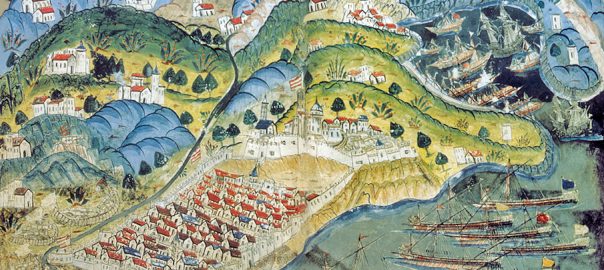There were not many new developments of world-historical importance in 1546 CE. Just these:
- The Italian War of 1542-46 was ended with a peace signed in Ardre (northern France.) This had been the fighting– principally between the Habsburg/Spanish King/Emperor Charles V and King Francis I of France that had roiled much of western Europe, and also involving England… and the Ottomans in the form of their Mediterranean privateer Hayreddin Barbarossa, who took part in the Mediterranean, aiding Francis at Nice in 1543. The “Italian” war only marginally involved terrain in today’s Italy. It is relevant in the broader story of the development of Western empires because (a) it showed how unsettled and fundamentally feudalism-based, the political situation was in Europe even at a time when Portugal and Spain were engaged in major imperial ventures on distant continents; and (b) since in this war so many of the battles were fought at sea, those experiences motivated the participants to sharpen the naval-warfighting capabilities that would later enable more of them to join Spain and Portugal in building transoceanic empires…
- In 1546, Charles was also starting another confrontation, against an alliance of German-Protestant lords called the Schmalkaldic League.
- And in the New World, Spain finally completed its conquest of the whole of the Yucatan, ending 25 years of resistance by the indigeneous Mayans.
- Among the notable people who died in 1546 were Hayreddin Barbarossa himself… and a 25-year-old Protestant-English poet called Anne Askew, who was tortured in the Tower of London and then burnt at the stake for the “heresy” of being more Protestant/evangelical than Henry VIII and his people were prepared to tolerate. She had been tortured so badly that she had to be carried to the stake in a chair. The image above is a painting of Barbarossa’s fleet at Nice, by the 16th-century Bosniak polymath Matrakçı Nasuh.
